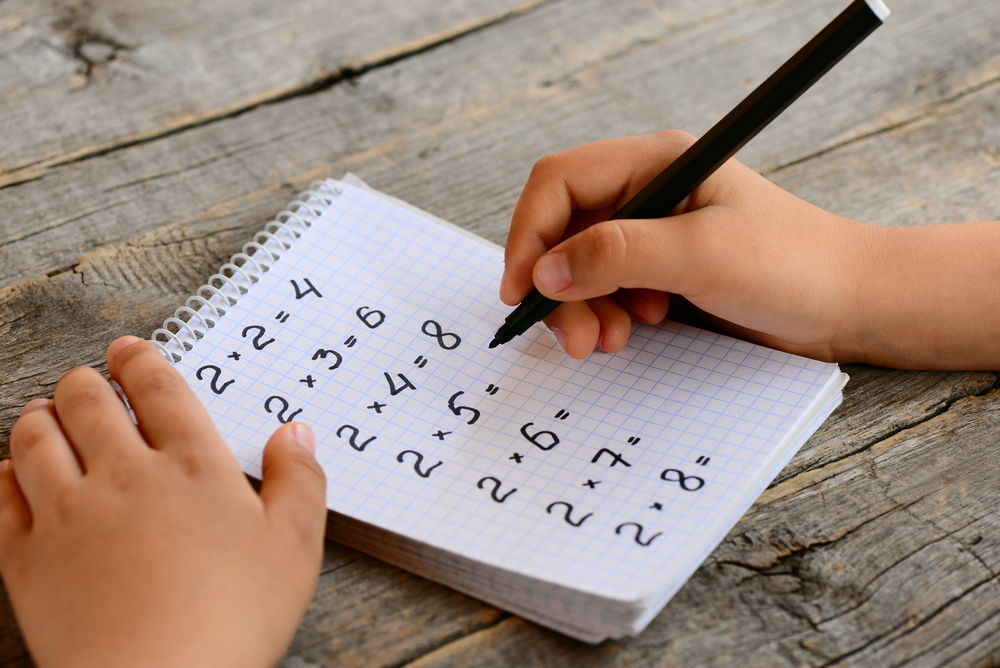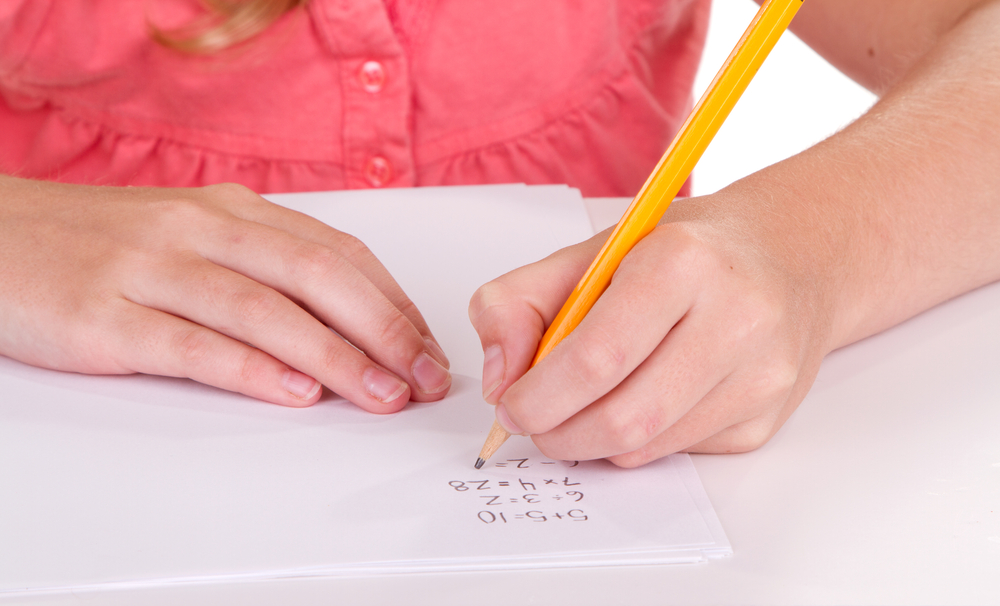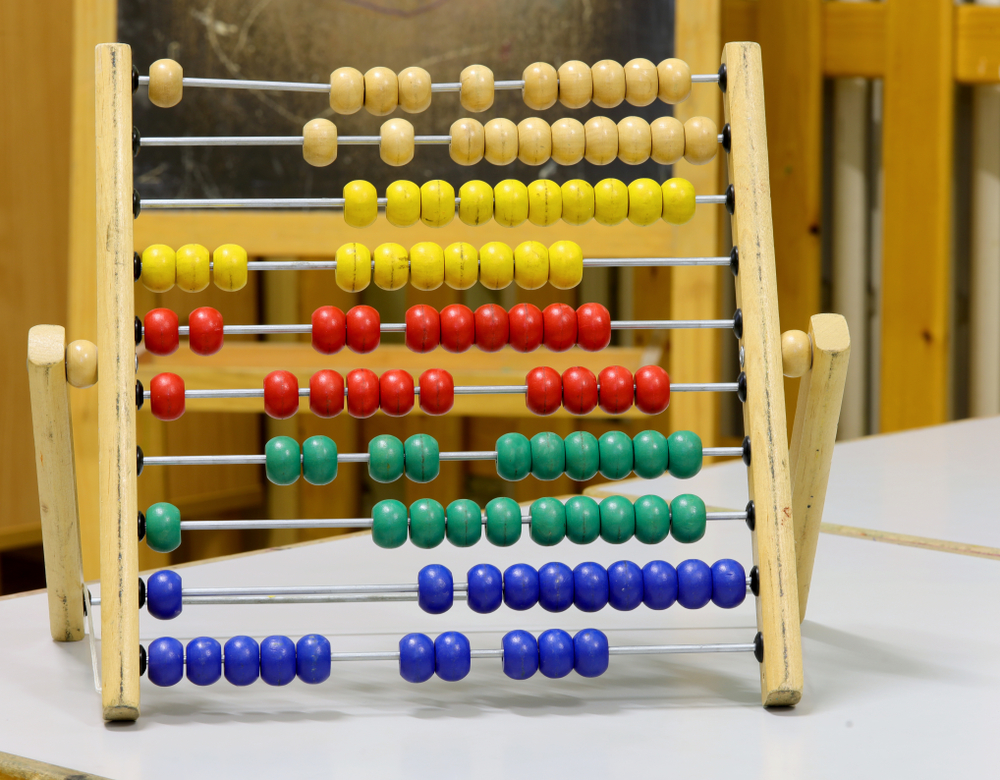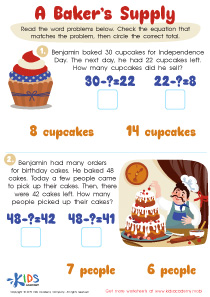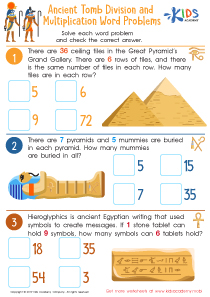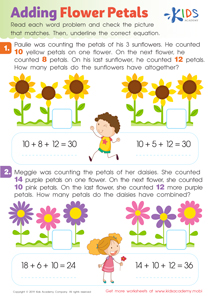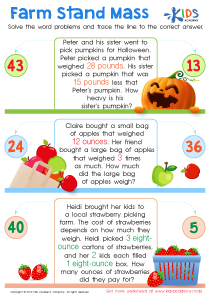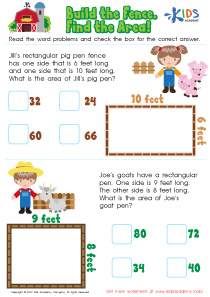Time Word Problems Worksheets for 9-Year-Olds
1 filtered results
-
From - To
Introduce your nine-year-old to the fascinating world of telling time with our Time Word Problems worksheets! Designed specifically for young learners, these sheets are perfect for homeschool homework and help children master the art of solving time-related questions. Through engaging scenarios and practical applications, kids will learn to read clocks, calculate time intervals, and understand daily schedules. These worksheets are tailored to build confidence and enhance problem-solving skills, making learning both fun and educational. Ideal for homeschoolers, our Time Word Problems worksheets are a must-have resource for enriching your child's math journey!
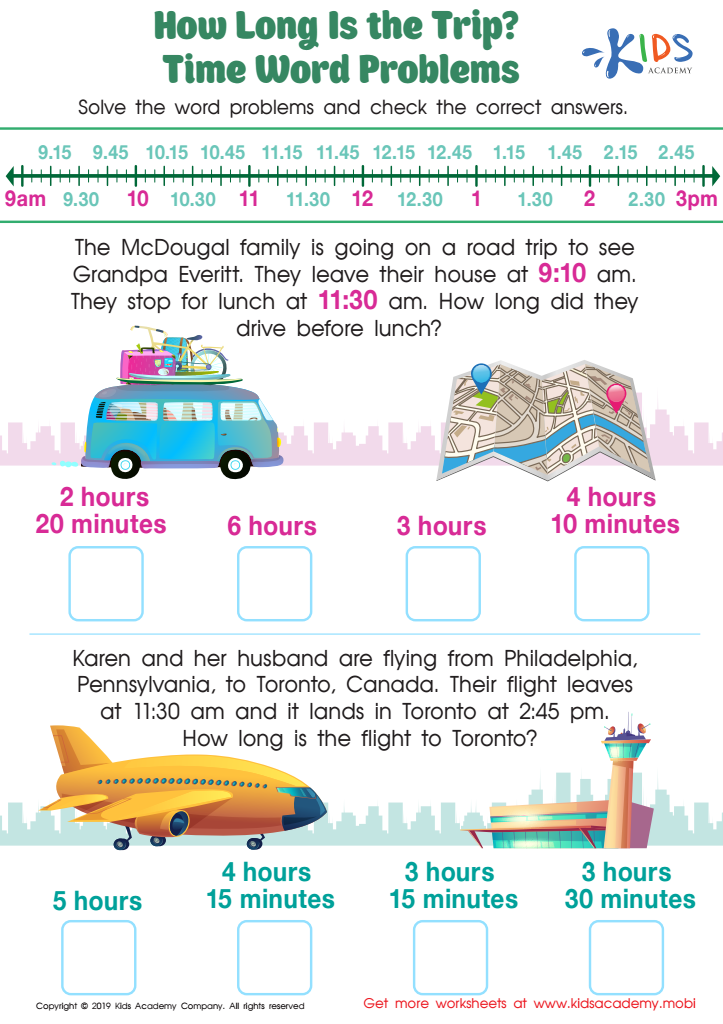

How long is the Trip? Time Word Problems Worksheet
Worksheets on Time Word Problems: A Valuable Tool for Nine-Year-Olds
As children grow, their educational needs evolve, requiring tools that challenge their minds and enhance their skills. Learning worksheets, especially those focused on Time Word Problems, are incredibly effective resources for nine-year-olds. These worksheets not only strengthen mathematical skills but also integrate real-world applications, making learning both engaging and relevant.
Why are Time Word Problems Worksheets so Beneficial?
-
Enhancing Problem-Solving Skills: At the age of nine, children are at a crucial stage of cognitive development. They are beginning to think more abstractly and analytically. Time Word Problems worksheets challenge them to apply their knowledge of hours, minutes, and seconds in problem-solving contexts. This not only deepens their understanding of concepts but also enhances their ability to think critically and solve problems efficiently.
-
Building Time Management Skills: Learning worksheets that focus on time help children understand the concept of planning and time allocation. By solving problems related to schedules, durations, and intervals, children learn the importance of time management. This is a vital life skill that aids them in their daily activities, including managing homework, chores, and leisure activities.
-
Supporting Academic Standards: Most educational curriculums emphasize the mastery of mathematical concepts including time. Time Word Problems worksheets are designed to align with these standards, providing children with the necessary practice to excel in their studies. They help reinforce classroom learning, ensuring that children grasp and retain key concepts that are critical for their academic success.
-
Encouraging Real-World Application: One of the significant advantages of Time Word Problems is their ability to link math with everyday situations. Whether it's calculating the duration of a TV show, planning a family outing, or understanding time zones, these problems make math relevant to real-life scenarios. This relevance helps children see the value of math beyond the classroom, increasing their interest and engagement.
-
Developing Mathematical Communication: Learning worksheets often require children to explain their thought process or to work in groups to solve problems. This nurtures not just mathematical skills but also communication. Children learn to articulate their reasoning, share ideas, and collaborate on solutions, which are essential skills in both academic and personal settings.
-
Adaptability and Personalization: Worksheets on Time Word Problems can be easily adapted to suit the individual learning pace and level of each child. For those who find mathematics challenging, worksheets can be simplified to build confidence. For more advanced learners, they can include additional complexities that push their cognitive abilities further. This adaptability ensures that all children, regardless of their proficiency level, can benefit from personalized learning experiences.
-
Interactive and Fun Learning: To capture the attention of nine-year-olds, learning worksheets can incorporate fun elements such as puzzles, games, and colorful graphics related to time. These engaging components make learning more enjoyable and less intimidating, encouraging consistent practice and deeper involvement in the learning process.
-
Feedback and Assessment: Time Word Problems worksheets provide immediate feedback to both children and educators. As children work through the problems, they can assess their understanding and identify areas where they need more practice. For teachers and parents, these worksheets serve as effective tools for monitoring progress and tailoring instruction to meet the needs of each student.
-
Confidence Building: Regular practice with time-related problems helps children become more confident in their mathematical abilities. As they solve problems correctly and understand the concepts more deeply, their self-esteem in math and other related subjects grows. This confidence can lead to better performance in school and a more positive attitude toward learning.
-
Preparation for Future Learning: Mastery of time concepts at an early age lays a strong foundation for more complex mathematical learning in the future. Topics like algebra and geometry often require an understanding of time calculations. Early exposure through engaging worksheets ensures that children are well-prepared for these future challenges.
In summary, learning worksheets focused on Time Word Problems are invaluable for nine-year-old children. They not only bolster mathematical skills and problem-solving capabilities but also prepare children for real-world interactions and future academic endeavors. By incorporating these worksheets into their regular learning routine, children can enjoy a holistic educational experience that is both challenging and rewarding.
 Assign to the classroom
Assign to the classroom
